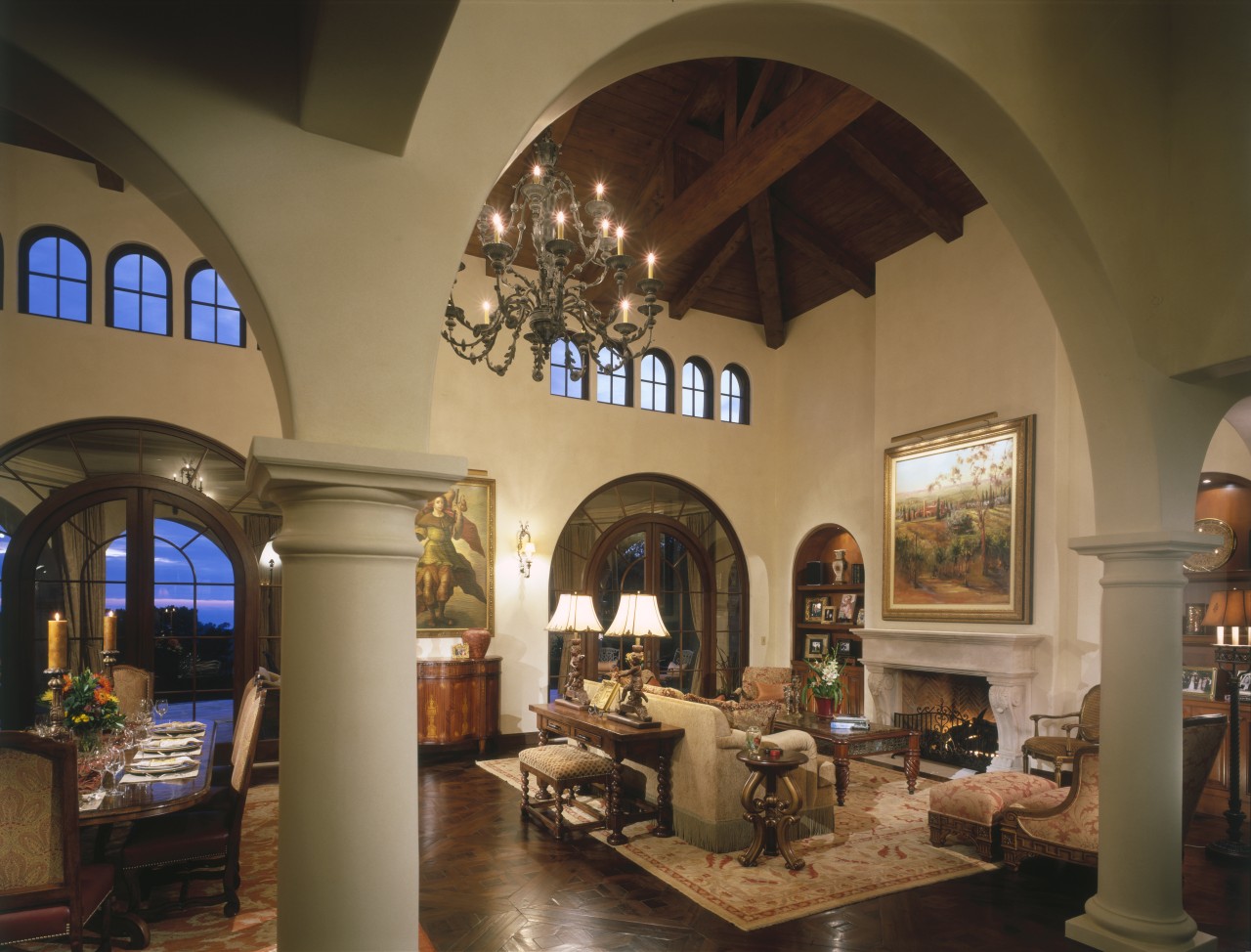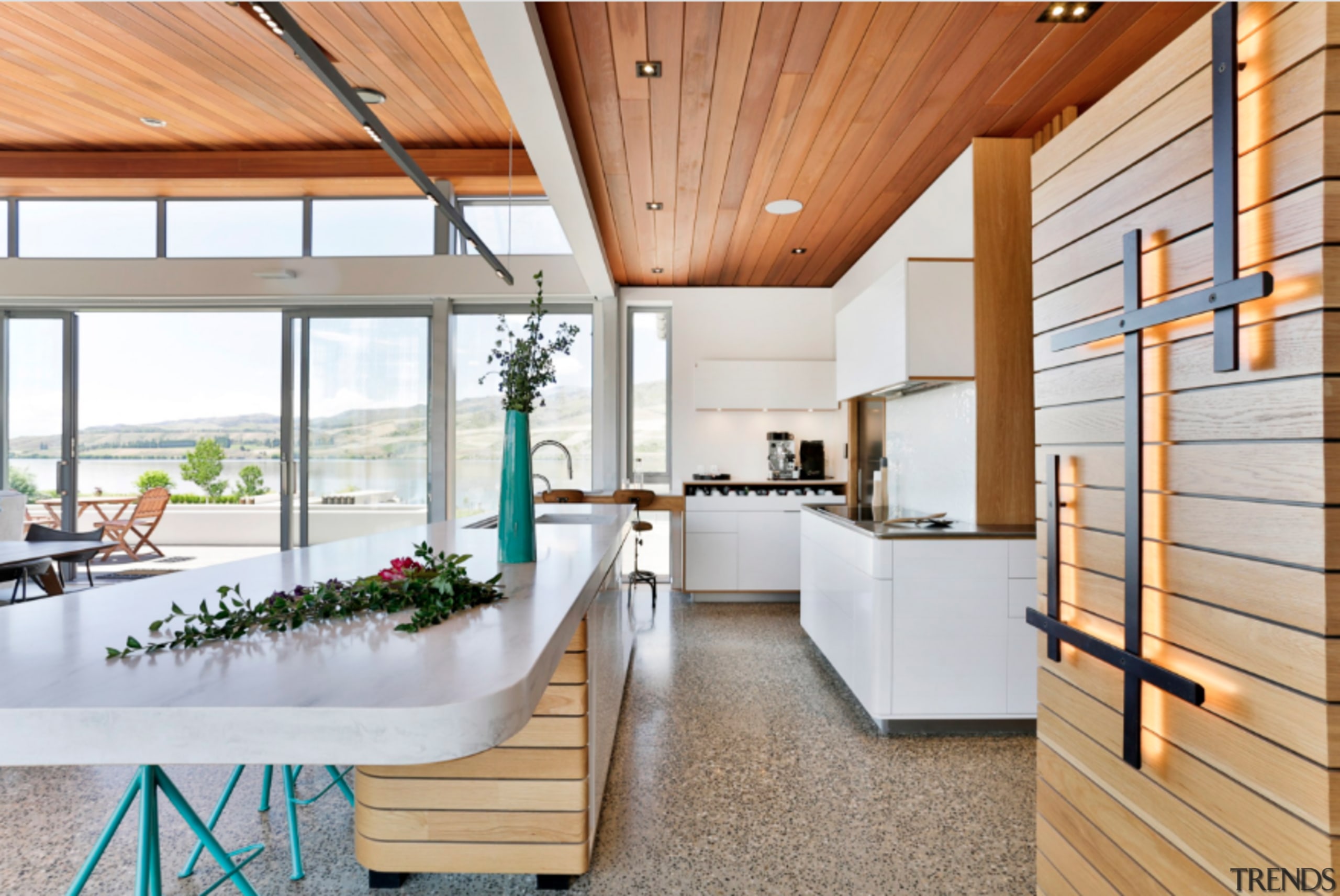In character
From the hand-painted frescoes to the Florentine-style fabrics, the furnishings in this house reflect its distinctive Mediterranean architecture

Different design influences have helped determine the look of many regions in the United States and in Santa Barbara, it is the Spanish Colonial heritage that has shaped much of the local architecture.
But, in true American style, it's an influence that is frequently adapted to suit the climate, the countryside, and the lifestyle of the residents. This new house, designed by Richard Landry, AIA, principal of Landry Design Group, with Todd Riley associate in charge, was heavily influenced by the Spanish Colonial tradition, but it also borrows from other eras and regions. Riley says the design is anchored in an architectural tradition without being shackled by it.
"The setting really lent itself to the concept of a Mediterranean hillside village. Consequently, the house is mostly one story. The roof line, topped with burnt-red clay tiles, varies and rambles until it reaches the one wing of the house that rises to a second story."
The material palette also reflects the Mediterranean influence the exterior features a smooth, hand-troweled stucco in a warm ochre color. It is on the inside, however, where much of the traditional detailing becomes evident.
Strong architectural features, including coved, beamed, trussed and frescoed ceilings, and high arched openings set the scene for a warm, Tuscan-inspired interior.
Rosie Feinberg of SFA Design says the color palette reflects a typical Tuscan villa and its surrounding landscape.
"Warm, comfortable earth tones feature throughout the house," she says. "It was important to provide a cohesive look, especially as the rooms flow from one to the other, so everything is a blend of something else. Occasionally, we have popped in a little red for drama."

In keeping with the look, the interior features a number of traditional-style fabrics, including tapestries.
"These help create an old-world feel, but don't look too clunky," says Feinberg. "Opting for different textiles on furniture in the great room also helps retain the comfortable, inviting look."
Riley says the sheer size of the great room could have created problems.
"With its high ceiling and dark, hand-hewn beams, the great room could have been overwhelming. We needed to create a floor plan that would retain the sense of each individual space."
To this end, the separate areas are clearly defined by columns and arches, area rugs and the furniture placement.
"It was important to get the balance right," says Feinberg. "The furniture needed to have a human scale to feel comfortable. The niches either side of the fireplace help to keep it intimate. Similarly, the small, high windows above the big arches break up the expanse of wall."
The great room opens to a covered loggia, which is effectively an extension of the living area. With a second, casual seating area, dining table and fireplace, it can function as an all-seasons entertaining space. Tall curtains can be pulled to block the wind or rain, enhancing the intimacy.

Another room opening to the great room is the library. Lined with mahogany wood paneling and shelving, this room is also characterized by a gold-leaf dome and brass chandelier. Leather chairs, tapestry pillows and a handmade Italian inlay desk enhance the seductive feel of the room.
An old-world wine cellar provides another Italian connection. This room has a brick barrel ceiling, moldings with grape motifs, and a large fresco that replicates the cellar interior. This effectively doubles the size of the room visually.
Frescoes are also key features of the master suite. Here the ceiling is decorated with a Florentine-style pattern painted on stretched canvas. There is also a hand-painted tile mural on a courtyard wall overlooked by the master bedroom. The mural presents a modern interpretation of a Canaletto painting of Venice.
"This room was designed as a retreat," says Riley. "With the large arch, we were able to accommodate a heavy wood bed frame, without it dwarfing the room."
"This room is a little more dressy than others," says Feinberg. "The decorative bed helps to tie everything together."
Credit list
Interior designer
Builder
Wallcoverings
Home audio
Basins
Bathroom flooring
Structural engineer
Flooring
Lighting
Bathroom vanity
Faucets and shower fittings
Story by: Trendsideas
Home kitchen bathroom commercial design
Connected to the ocean
Masculine meets mixed use
Contrast and connection













